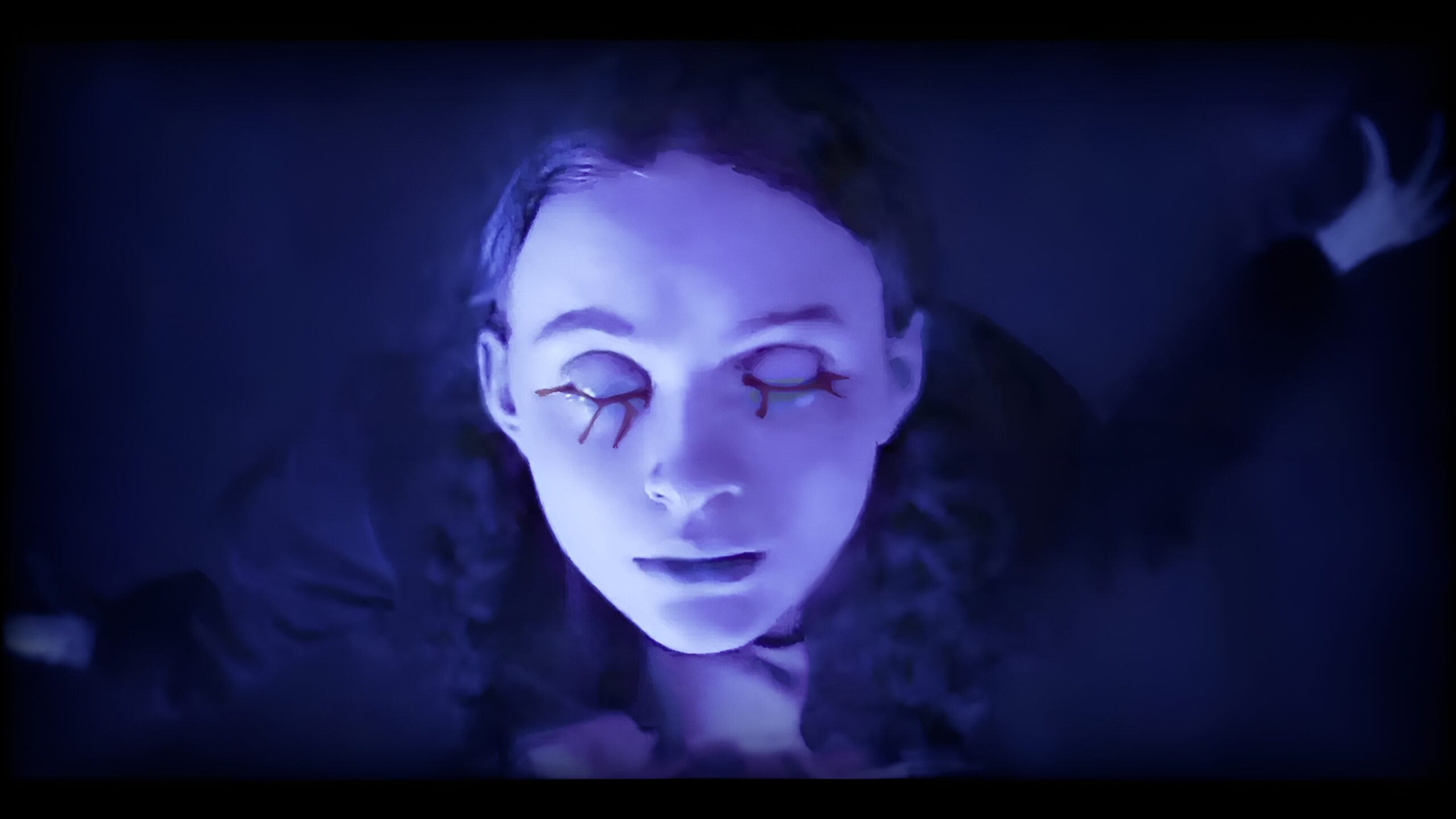It’s not a sin to speak from the heart.
Max Mayfield’s symbolic story revolves around one idea: externalizing mental illness. We all have scars in some shape or form — whether they be visible or invisible. We are talking about invisible scars in the case of mental illness. Invisible wounds. Aside from the lies of social media, there is such a thing as internal turmoil in what looks externally stable. You can have everything in the world yet remain empty. Our society has always had this trouble with mental illness. This is why I find Max Mayfield’s story so compelling.
This is the last blog of a four-part series. It’s going to be less of a narrative and more of a matter-of-fact analysis. If you’re new to this story, I suggest you start with the first blog: Marked By Trauma.
To be clear, the show’s symbolic nature does not refer to Christianity (nor religion) in any way. This fact makes it extraordinarily difficult to find accurate Christian symbolism. I will attempt to identify some possible Christian symbolism. But know that doing such is to be taken with a grain of salt. Yes, the song called Running Up That Hill has the lyrics of, “I would make a deal with God, and I’d get Him to swap our places.” Yet, the original symbolism is not meant to be taken literally. This is an important note for the sake of avoiding misinterpretation. It’s neither promoting nor criticizing religion. Again, the entirety of Max Mayfield’s symbolic story revolves around one idea: Externalizing mental illness. With that said, this blog’s take on ALL symbolism is based on my own opinion.
So far, there are two main “bad guys” in Stranger Things. The first is a monster called the Mind Flayer, which has the form of black dust; it has no solid form. In the case it wishes to take shape, the Mind Flayer takes the form of a 700-foot-tall spider with eight legs. The second villain is a massive six-foot monster named Vecna. We learn that Vecna was originally a kid (a boy named Henry who served as a military test subject for the Cold War in the 1960s) who was thrown into the same realm as the Mind Flayer. This “different realm” would alter his appearance as a creature made up of tentacles.
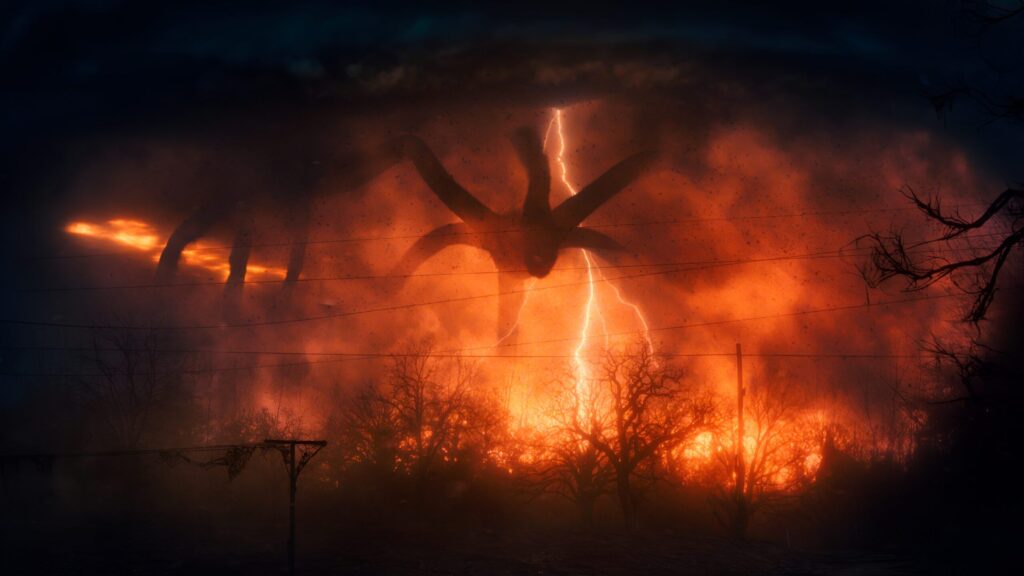
The Mind Flayer (aka “shadow monster”) symbolizes the concept of intense hatred. It’s a creature from a different dimension that has no form. Thus, emphasizing the fact that hatred has no definitive form. It also has the desire to find some sort of way to make a gate, an opening, to infiltrate our world and kill everyone and everything — with no reasoning or logic. This is apparent within the story, as there’s one case in which a lady nicknamed El prevents the Mind Flayer from entering our world. In that case, the Mind Flayer redirected its full intent to kill this lady named El — not by reason, but for revenge. The Mind Flayer abandons ALL of its plans for the sake of revenge. Thus, we see the Mind Flayer symbolizes blind hatred. This ultimately led up to the Mind Flayer killing Max’s brother instead of El — thus traumatizing Max. Ironically enough, it was the Mind Flayer’s intense desire for revenge that would sabatoge it’s own plans.
In Christian terms, the Mind Flayer is VERY difficult to interpret. It may be nearly impossible to find a definitive answer since it wasn’t intended for Christian interpretation. Nevertheless, I have three possible interpretations: (1) the intimidating and overwhelming image of sin, (2) the illogical desire of sin to kill everyone, as well as (3) the harshness of sin in preying on those most vulnerable. All three symbolic interpretations are my own.
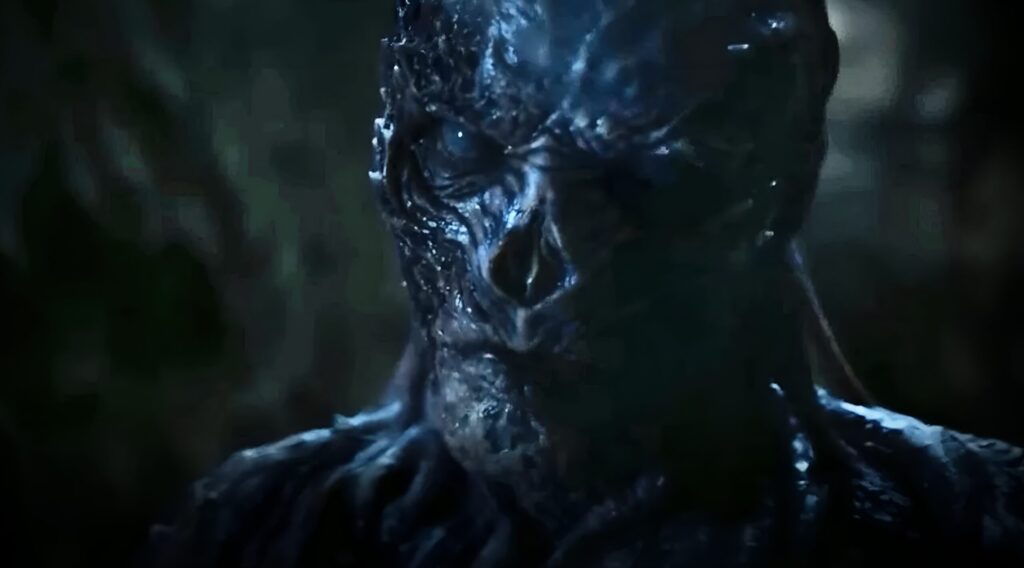
The other villain of the show is a character named Vecna, who is working along with the Mind Flayer. He has the same desire to infiltrate our world — but for different reasons. The moment Vecna sees the death of Billy is the same moment in which he sees Max’s trauma. In this case, the logic of “make lemons out of lemonade” is applied. Yes, the Mind Flayer failed in its mission. But it made a possible new way to enter our world — by having Vecna kill Max. Thus, Max was “marked by trauma.” The Mind Flayer’s failure would turn into Vecna’s opportunity. Vecna used the logic of, “You did it your way, and we failed. So let’s do it my way.”
As mentioned in previous blogs, Vecna symbolizes PTSD and mental illness. With the Mind Flayer’s failed attempt, Vecna decides to get the job done his own way. Vecna requires four kills to do such. That raises the question: “Who can Vecna kill?” Vecna’s victims have two common traits: (1) they’re either teenagers or children, and (2) they struggle with mental illness. One of Vecna’s “superpowers” is his ability to enter the mind of his victims. He uses his victim’s emotional trauma to put them in an inescapable trance. The raw and intense emotions of their trauma weaken the victim’s desire to live. By touching his victims, he makes a connection between his world and our world. Vecna then crumpled their bodies like paper. They no longer had a physical body to return. It’s possible to escape Vecna’s trance, but this requires an acceptance of the current moment and a willingness to live. Those who are mentally ill (especially those who consider suicide) are the type of victims that Vecna targets. The trance symbolizes recurring suicidal thoughts. At the end of season four, Vecna successfully kills four teenagers. The gate is opened and leads us to the fifth season of the show.
In Christian terms, Vecna can clearly symbolize as Satan and his bombardment of lies. Satan takes our narratives and changes them to what they never were. Satan disguises self-hate as humility, fear as weakness, and secret desires as unforgivable sins. But remember: Satan’s only motive is to make you his servant. Not to promote truth. Nothing more. On the other side, we can see God and His deep desire to tell us the truth. With that said, self-hate is not a product of God’s voice. Neither is fear. Nor is the burden of unforgivable sins. We may not have all the answers, but we don’t have to. Remember God’s word. May we be at peace.
My prediction is this: The moment the Mind Flayer no longer needs Vecna is the same moment in which the Mind Flayer is ready to kill Vecna. He is of no further use. Vecna will be another victim consumed by the Mind Flayer’s illogical craving to kill. If nothing else kills Vecna, then the Mind Flayer will do the job.
We begin Max’s journey after she witnesses her brother’s death and is “Marked By Trauma” by Vecna. It shows the harshness of mental health trauma, as you’ve lost something you hold dear in which leads to exploiting your own death. It was first rumored by Max and her friends that she would be Vecna’s next target. The moment she saw Vecna in a vision was the confirmation that she was the next target. Everyone is held in suspense. The process would start with an inescapable trance. It would end with your body broken. Max was set to die at her brother’s grave as she read a letter asking for forgiveness. The sickening humor of Vecna is equal to both the cruelty of Satan and the harshness of mental illness.
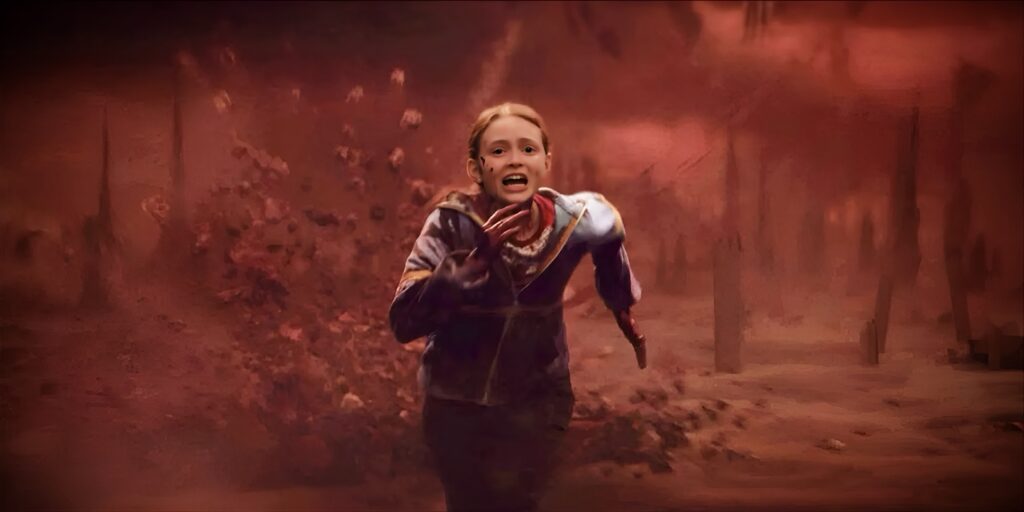
Max’s near-death experience with Vecna was unique. As mentioned before, there is a way to wake up from the trance. It requires a willingness to fight for your life. Thus, you may recall that Vecna’s targeted victims are those who suffer from mental illness (especially those who suffer suicidal thoughts). She survives by a song of great emotional significance. The show’s intended interpretation is to highlight the power of positive memories and supportive friends. From a Christian’s perspective, the song lyrics can be taken quite literally. This includes the bridge that says, “Come on baby, come on darling. Let me steal this moment from you now. Come on angel, come on darling. Let’s exchange the experience.” This can be seen as Christ directly asking us to take our place in the coming demise. The chorus can be interpreted as literally.
“If I only could, I’d make a deal with God. And I’d get Him to swap our places.”
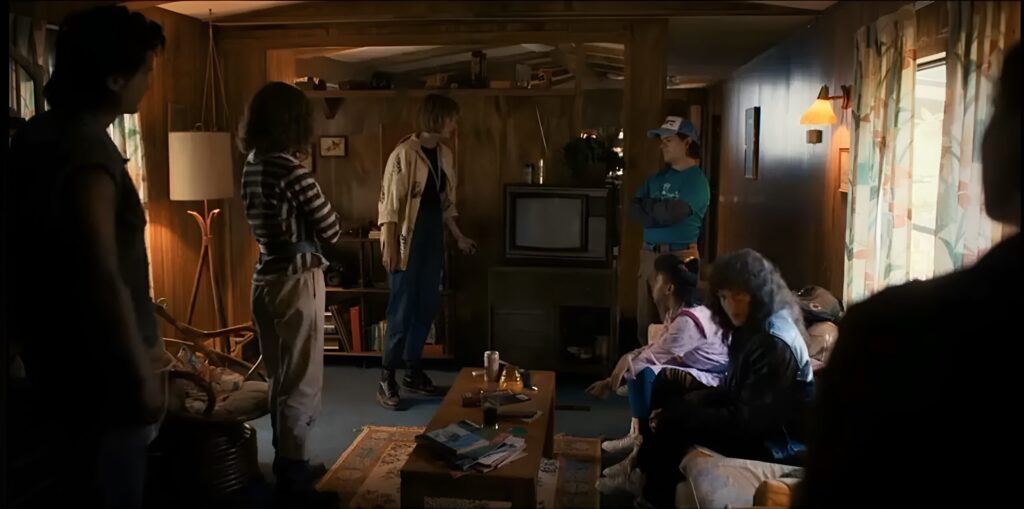
Towards the end of season four, our heroes have all agreed: Vecna needs to be killed. Of course, such a task seemed impossible. Not only is Vecna in a separate (and nearly unreachable) dimension, but he’s far too strong. As a small group of teenagers, they wouldn’t stand a chance. Nonetheless, they still need to kill Vecna. The lives of their community depended on it. It was now or never. Inaction would mean certain death.
After the discussion, the group had determined what they needed to get the job done. The plan was set. Yet, there was one flaw: They needed to distract Vecna from our protagonists’ attack. They needed to kill Vecna unexpectedly. This is when Max spoke up. Max would willingly enter the dreaded trance and trick Vecna into putting all his attention on killing her. Max would put her own life at risk — again. Vecna’s deep desire to kill Max would expectedly lead to his unseen death.

Among the important aspects of therapy is providing an atmosphere free of judgment. Externally, the world would condemn Max for her confession. The world would say, “you should do this” or “you shouldn’t do that.” This approach never leads to a solution. In fact, that’s the source of the problem. It turns out that Max indeed wanted her brother, Billy, to disappear. And yes, Max’s secret wish for her brother to die is immoral. The world would agree. But what the world doesn’t see is how the thoughts and feelings make sense. She was a thirteen-year-old girl who couldn’t contemplate the concept of death. She was enduring childhood trauma. Her biological father had left. The many stepfathers she had were abusive. Her stepbrother, Billy, was abusive. Being a thirteen-year-old girl, she had an innocent desire for all her abusers to stop hurting her. She was a young girl who didn’t want to be abused anymore… But the world doesn’t see that. The world says it’s too shameful to admit. In other words, the world would make all of this worse by telling her to “shut up and stop being immoral.” But remember this: You can’t solve a problem you can’t acknowledge is there. In this case, the world would expect Max to “be like everyone else.” But true success in this case means mastering your hidden desires. Yes, you may feel distressing emotions. And yes, you may have fleeting thoughts of self-destructive behavior. But it is with the help of therapy that you can find the blessings amongst your curses. There is a way to use your trauma to love others. That’s what true therapeutic success looks like. With that said, I believe the concept of “using your trauma to love others” will play a vital role in Max’s symbolic story of season five. But that’s a discussion for later…
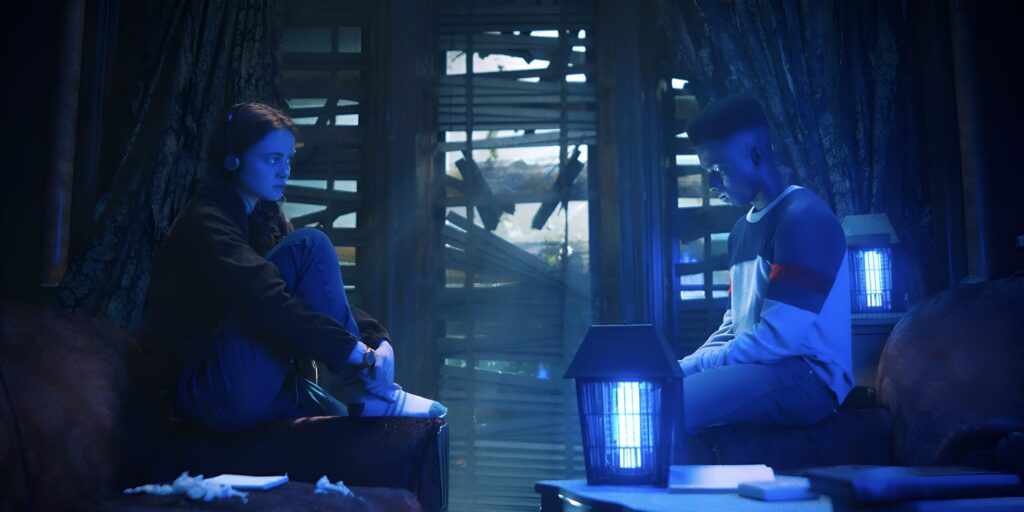
In case you missed it, the first blog of this series (“Marked By Trauma”) involved Max laying out letters on a table. This was meant to symbolize as suicide notes. Each letter is for each person in her life. In addition, she found herself trapped in the arms of Vecna, shouting “Let me go!” This was meant to symbolize a person’s desire to escape the grasp of mental illness – only to find themselves powerless. The first time Max stood in front of Vecna was meant to be negative. She’s a victim of childhood trauma and is on the verge of dying. She barely escapes with her life. But in this fourth blog of Max making her “Last Confession,” it is meant to be a positive. It involves a willingness to face Vecna head-on. Whether painful or not, she makes a bold move to speak out what she’s scared to admit. It’s an act of bravery. It’s an act of risking her life to save others. So, why is that significant? It’s significant because we can know what this act does NOT symbolize. We can know it has nothing to do with religion. It is NOT a satanic ritual. Neither is it talking with a demon. Nor is it contemplating suicide. Again, this entire journey of Max’s mental health is about one idea: Externalizing mental illness. In this case, it’s about having the courage to confess an ugly truth. It’s about defying our society’s unfair judgment towards asking for help. It’s about changing our society’s attitude towards mental health and therapy. At the end of the day, it’s not a sin to seek therapy. It’s not a sin to uncover hidden truths. And it’s not a sin to speak from the heart.
At this point, our heroes are ready for the attack. The first step would begin with Max. She would willingly allow Vecna to possess her. She would lure Vecna to enter her mind. Once distracted, the other friends would move in for the kill. Her close friends, Lucas and El, would be beside her throughout the dilemma. For clarity, Lucas is Max’s significant other. And El is one of our protagonists who has “superpowers.” There’s no accurate way to describe El in terms of Christianity. The best metaphor of her powers is that of an angel — she can watch others afar. The moment Max begins to speak is the moment the plan is underway.
Where were you when I was lonesome?
Locked away with freezing cold.
Someone flying, only stolen,
I can’t tell; this night’s so old.
The issue isn’t our direct emotions and thoughts, but rather our response to those emotions and thoughts. The issue isn’t our temptations, but rather our choice to act on those temptations for our sinful pleasure. Even Jesus faced intense temptations. But the fact of the matter is He never gave in to those temptations. Emotions aren’t facts. Thoughts are always fleeting. Again, it’s about our heart of flesh. It’s about our intent. God knows the difference…
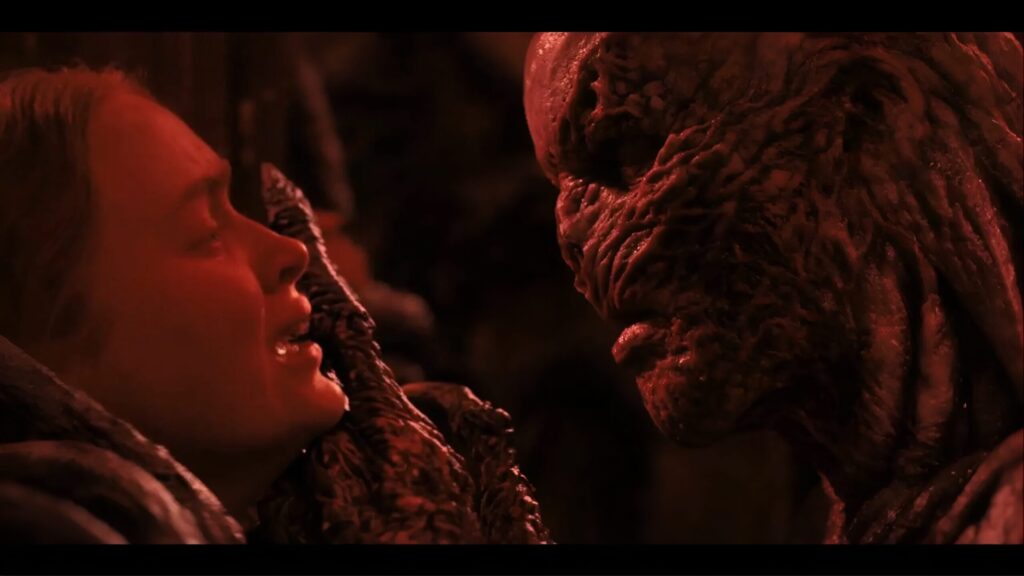
“A fading voice doesn’t mean a finished story.”
One of the most heartbreaking scenes of the show is that of Max’s death. In case you’re unaware, we watch as Max’s friends run out of time and are unable to kill Vecna. Max doesn’t stand a chance. Vecna’s full attention is on Max, and she is unable to keep running. Vecna entangles her in vines and breaks her body. Fans were shocked by her gruesome death. The emotional investment of the entire season was built on Max’s symbolic story. And to the fans’ surprise, that story came to an end. A symbolic story of inspiration turns into an unresolved tragedy.
The bodies of Vecna’s other three victims were completely shattered. Their bodies were crumpled like paper — solidifying their death and preventing any possibility of return. But Max is different. Max’s arms and legs were indeed broken. Her eyes were gouged. She died for a short moment. But she woke up in the middle of the dilemma, as her friends were able to stop the process from finishing. Max is currently in a coma and unresponsive, but has a body that still has a heartbeat. We as fans are left in suspense as to speculate what this means. But ultimately, it’s been confirmed by the show’s founders: Max is alive and will return to the show.
What was that my sweet, sweet nothing?
I can’t hear you through the fog.
If I holler, let me go.
If I falter, let me know.
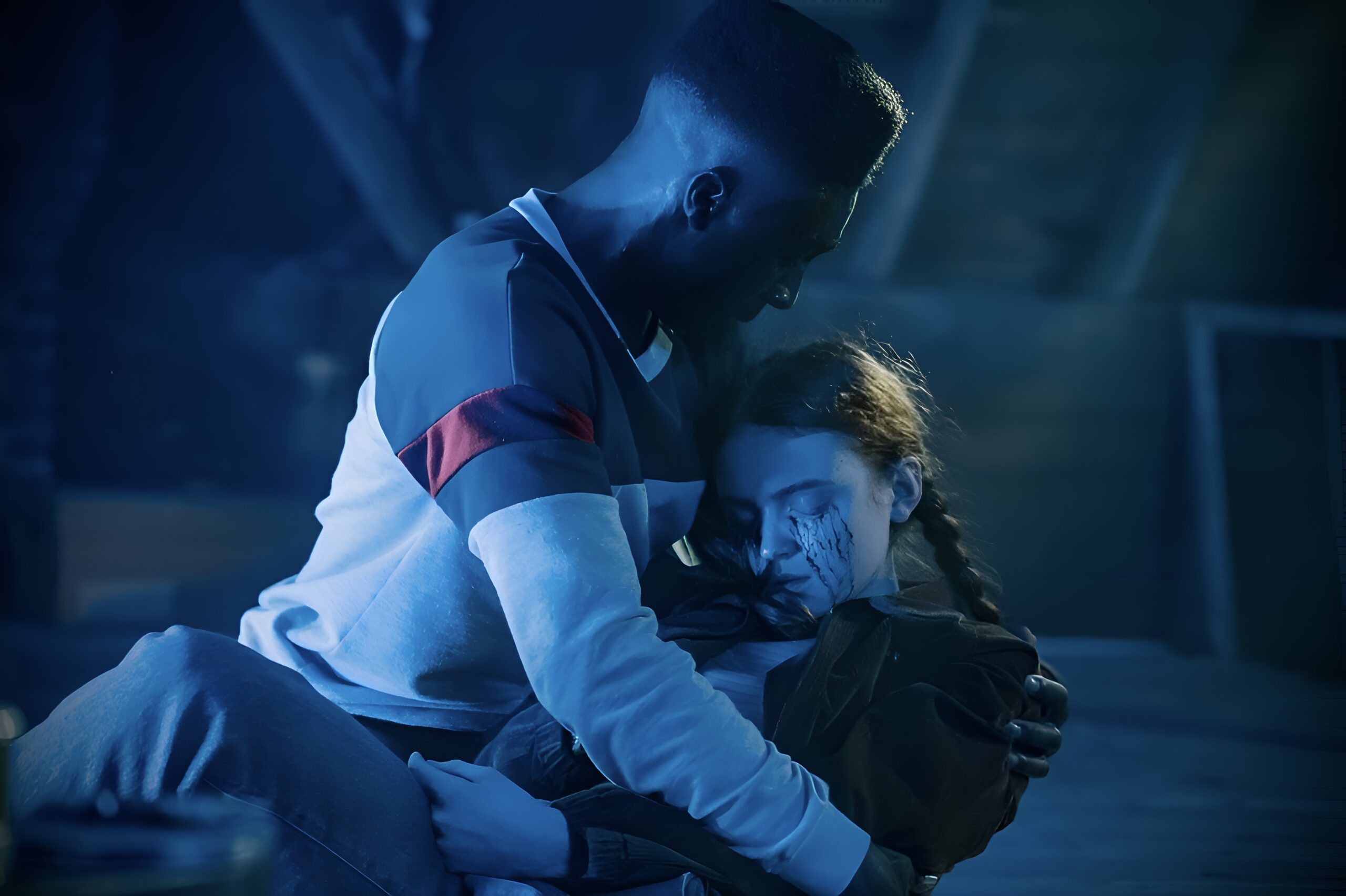
Attempting to interpret the symbolism of Max’s (temporary) death is especially difficult. Almost every theory on the matter doesn’t make sense. However, I would commend that the reason for this confusion is that Max’s story isn’t over yet. It’s similar to attempting to solve a puzzle without half of the pieces. Did it symbolize a suicide attempt? Was it the result of satanic worship? Was it the result of “talking with a demon?” Let me remind you of the one idea around which this symbolic story revolves: Externalizing mental illness. Again, it has nothing to do with religion. It has everything to do with revealing the ugly truth of mental illness.
So, what does Max’s (temporary) death symbolize? I believe it symbolizes that there is still hope amidst death and tragedy. Just because mental illness overcomes you doesn’t mean it’s the end. Sometimes a victory with mental illness is simply surviving another day. Sometimes it’s about having one heartbeat over another. We’ll have to wait until the show’s ending before we can find an accurate interpretation.
Max’s (temporary) death is symbolic in that it reminds us of our frail nature. It symbolizes the ugly truth of mental illness. And it also symbolizes the bravery of attending therapy and uncovering those ugly truths.
“Sometimes a victory with mental illness is simply surviving another day.”
It’s still difficult to rewatch Max’s death scene. It was especially difficult at the moment. But it’s far less intense in knowing it’s not the end. As a disclaimer, Max wakes up with her eyes gouged and her arms and legs broken. The following scene of Max’s death is very graphic and emotionally intense. Discretion is advised.
I don’t want to swim the ocean,
I don’t want to fight the tide.
“Max’s external pain is as real as the suffering of mental illness. The only difference is you can’t see it…”
It’s been rumored that Vecna is looking for another child to kill in season five. It’s believed that his next target is an eight-year-old girl named Holly Wheeler. With that said, there are also rumors that Holly will have a “secret weapon” against Vecna: Maxine Mayfield. It’s believed that Vecna will kidnap Holly, but Max (whose soul is still alive and currently hiding from Vecna) will somehow take Holly back. Max would use her experience to elude Vecna while caring for Holly. This has major significance if true. It would symbolize that Maxine’s intense pain and near-death encounters can be used to save the life of an eight-year-old girl. In other words, Max will use her trauma to love and protect Holly. Therefore, the quote is true: “Our pain always has purpose.”
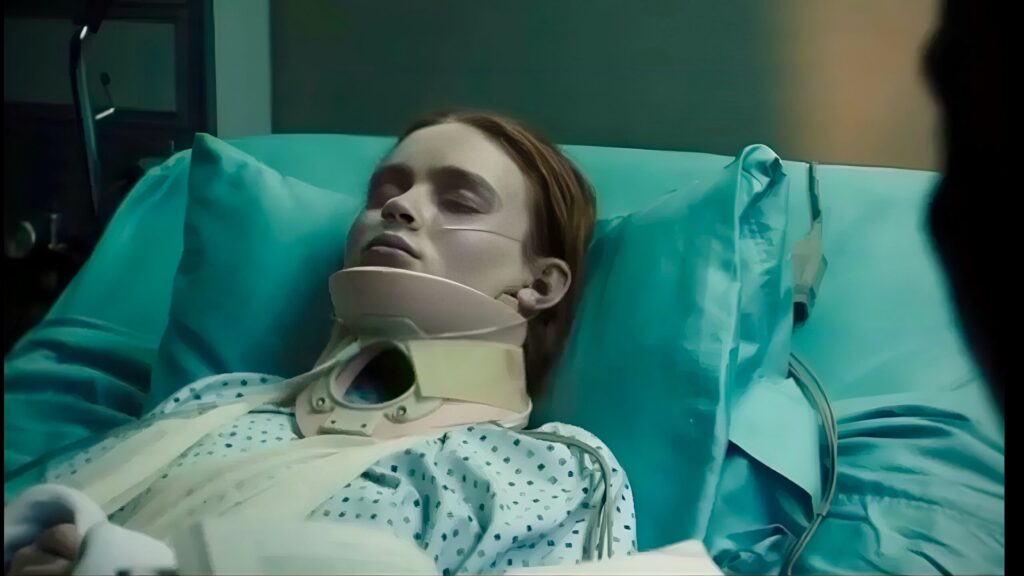
We’ll never know the full symbiotic nature of Maxine’s story until the show ends. Nonetheless, it’s a worthwhile story that has intense emotional meaning to keeps us all on edge. Max died at the end of season four, but the story isn’t over yet. I have a feeling that whatever symbolism is involved will have a heartfelt lesson in which we all can admire. We’ll have to wait and see…
“Both video clips have been shortened to include only the footage relevant to the commentary. Used under Fair Use for analysis and commentary.”
